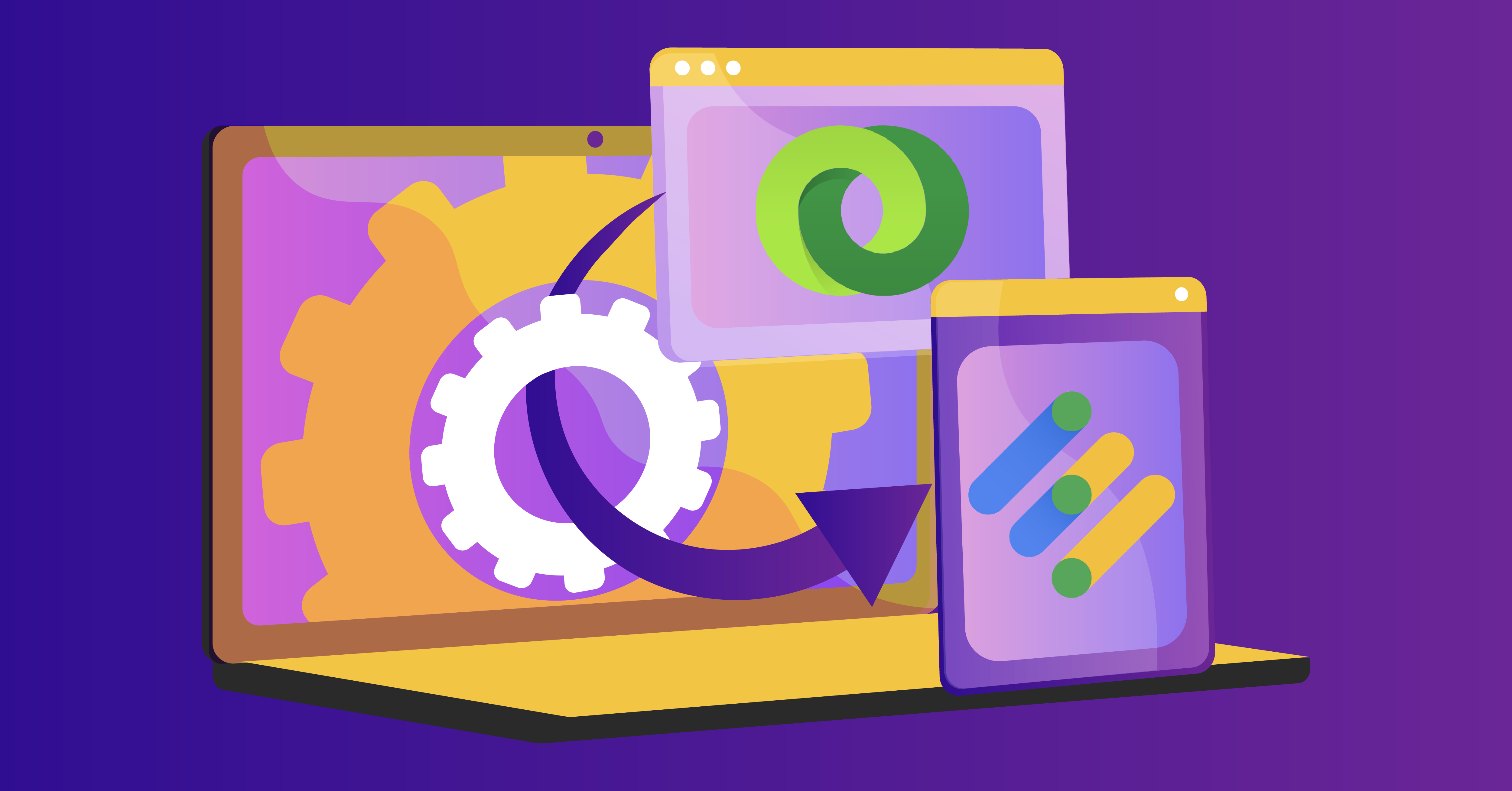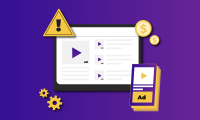DoubleClick for Publishers (DFP) To Maximize Revenue: Know All About It
DoubleClick For Publishers (DFP), today known as Google Ad Manager (GAM) is an advertising management tool for publishers of a larger scale. It is an ad server that connects the publisher to ad networks and advertisers. Since its inception, it has been an important pillar in the advancement of the programmatic advertising industry. Publishers can generate incremental revenue using this tool as it helps them to maximize their impressions.
Introduction to Google Ad Manager (formerly known as DoubleClick for Publishers)
Since its initial release, the Google Ad Manager (GAM) platform has been rebranded twice. It started in 2007 with the DoubleClick Company, comprising the DART for Publishers ad server and the DoubleClick Ad Exchange. DART was later rebranded as DoubleClick for Publishers in 2010. Under the same entity, a separate tier for small businesses was formed. In 2018, the DoubleClick company was eliminated, and the DFP had a new product name- Google Ad Manager.
Along with Doubleclick for Publishers, other Google products also went through a rebranding. Here’s a list of updated Google’s ads properties.
| Formerly known as | Rebranded as |
| DoubleClick for Publishers | Google Ad Manager |
| DoubleClick Digital Marketing and Google Analytics 360 Suite | Google Marketing Platform |
| Google AdWords | Google Ads |
This rebranding occurred after 18 years of its launch. Not only was it the need of the hour, but the rebranding of Google’s ad products opened the gates to many more possibilities. Furthermore, it has become simpler for any individual looking to monetize their website.
Coming back to Google Ad Manager (DoubleClick for Publishers), it is one of the top ad management platforms in today’s time. However, it is a tool ideal for large-scale publishers. For small-scale publishers, Google AdSense is the ideal choice.
What is Google AdSense?
Google AdSense is an ad network owned by Google that let’s individuals and businesses generate ad revenue by advertising on the Google Network. They can display ads in formats like text, images, or interactive ads targeted to the site’s content and audience. Google AdSense follows the advertising model of cost per click or cost per impression.
One of the benefits of using Google AdSense is that it is a self-serve platform and free for users. This is an ideal platform for small businesses or individuals who have less than 100k monthly traffic. Publishers who are beginning their monetization journey can do it by using AdSense. Along with Google AdSense, Google Ad Exchange is another coveted Google ad property.
What is Google Ad Exchange?
Google Ad Exchange formerly known as DoubleClick Ad Exchange was a part of DoubleClick. Google AdX is an ad exchange platform or marketplace that brings publishers, advertisers, and ad networks together. It offers competitive deals to publishers as it supports real-time bidding and private auctions.
How can publishers switch from DFP to AdX?
Earlier, publishers would use two different platforms- DoubleClick for Publishers (ad server platform) and DoubleClick for Ad Exchange (SSP/ad exchange platform). But now they have been both merged under Google Ad Manager.
How is DoubleClick for Publishers different from AdSense and AdX?
DoubleClick for Publishers (Ad Manager) and AdSense perform the same function- help publishers sell their inventories. However, they both have different features catering to the designated size of publishers on each platform. These features differ in factors such as deal preference, vendor filtering, blocking, reporting, and revenue payments.
AdX is a part of Ad Manager but they both perform different functions. Furthermore, AdX cannot be integrated into a website like GAM or Google AdSense. It is a different marketplace and only publishers with more than a minimum of 5 million monthly views can join the platform.
DoubleClick for Publishers, now known as Google Ad Manager, is a wholesome ad management platform that comes with ad server functionality. By applying to the Google Ad Exchange, publishers can create and manage direct as well as programmatic ads across all inventories. This feature is not available in AdSense.
As opposed to Google AdSense, which does not allow publishers to reach the maximum selling price for their ad inventories, Google Ad Manager lets publishers make the most ad revenue possible by using header bidding. This is ideal for medium and large businesses that receive over 100k monthly traffic.
What are the types of Google Ad Manager?
Before rebranding, the DoubleClick company hosted both small and large businesses. That is still a part of Google’s ads properties. Here are the two types of Google Ad Manager:
- Google Ad Manager Small Business
- Google Ad Manager 360
These two versions of Google Ad Manager come with their own set of benefits.
- Google Ad Manager Small Business is available for free.
- Google Ad Manager 360 is a paid version of Google Ad Manager. The payment is influenced by the monthly impressions.
- Under the free version of Google Ad Manager, the publisher can get up to 200 million monthly impressions.
- In the case of the paid version of Google Ad Manager, anything above the free limit is priced and negotiated with Google.
How does DoubleClick For Publishers or Google Ad Manager work?
To put it simply, Google Ad Manager, or DFP, is the middleman between the ad inventories of publishers and the third-party ad networks (publishers can use other ad networks parallel to Google Ad Manager including Google AdSense) that have various advertisers on board. Publishers can acquire ad inventories across various online media.
To get access to Google Ad Manager, one must have a Google AdSense account. However, if for a small size publisher, they can simply stick to Google AdSense without creating an account with Google Ad Manager.
What are the new features of Google Ad Manager?
- Feasible User Interface
Potential publishers often assume that Google Ad Manager must be very complicated to decode and navigate given the array of tech solutions available on the platform. However, it is to be noted that Google Ad Manager and other Google ad services are highly convenient to operate. This platform is highly user-friendly with features like step-by-step instructions, a Google Ad Manager Support team, comprehensive graphics, and simple language.
- Centralized and flexible platform
Google Ad Manager is a publisher’s one-stop destination for all their web monetization needs. They can create, manage, and sell their ad inventories using this single platform. They can manage both programmatic and direct sales. They can also invite buyers, accept their insertion orders, and use different revenue models.
- Advanced targeting and reporting
Google Ad Manager makes it possible for publishers to control how they want to channel their ads and who they want to target. They can explore niche targeting based on different verticals and ad inventories. Furthermore, they can explore the following targeting options:
- Conduct device targeting for phones, desktops, tablets, smartphones, and connected TVs.
- Optimize targeting based on the browsers and their different versions.
- The targeting can also be based on the brands of devices like Apple, Samsung, Amazon, etc.
Some other options for targeting also include operating systems, locations, types of internet connections, etc. Google Ad Manager features customized optimization for advanced targeting.
- Meticulous reporting
Google Ad Manager’s advanced optimization for customized targeting also comes with the feature of detailed reposting tools. Publishers can create reports of their demand partners, best-performing ads, ad formats, etc. They also get to choose the reporting template that helps them prioritize KPIs as per their goals. The advanced analytics of Google Ad Manager also includes weekly, quarterly, or monthly reporting.
- Forecasting
Ad Manager has a forecasting feature that checks the availability of ad inventory. Publishers can run the forecast for selected line items and Google Ad Manager will provide them with an analysis for the same. It helps predict future traffic volumes by analyzing the past 24 months of traffic. This forecasting gives the publishers information about available impressions and matches the targeting of the line item.
Some other Google Ad Manager features include video solutions, user role permissions, open auctions, ad testing, etc.
To wrap up…
Google Ad Manager is a powerful advertising tool that helps publishers define their purposes and drive their ad revenue. This is a highly efficient and competitive tool that lets them sell and manage their ad inventories to their fullest potential. By using Google Ad Manager, publishers can unlock the full potential of their website as well as the monetization ecosystem.




Leave a Reply